Mil Mi-1 on:
[Wikipedia]
[Google]
[Amazon]
The Mil Mi-1 (

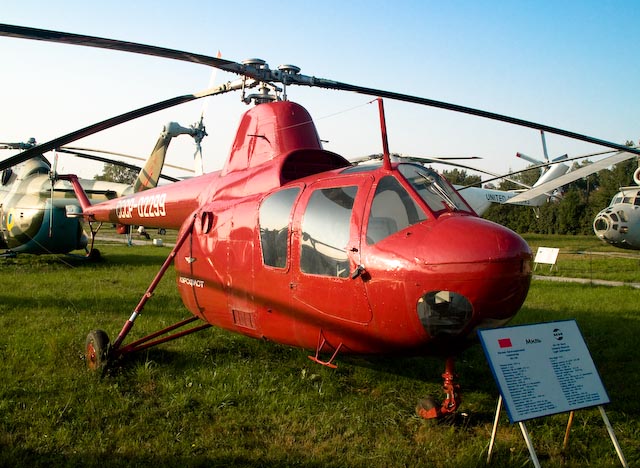 All early variants seated pilot in front and two passengers behind him, in common cabin.Grzegorzewski, 1975 an
All early variants seated pilot in front and two passengers behind him, in common cabin.Grzegorzewski, 1975 an
Mi-1 at Ugolok neba
/ref> The first production variant was Mi-1, quickly replaced by improved Mi-1T, that carried extra operational equipment including full radio and blind-flying instruments, and had more reliable engine AI-26V.Grzegorzewski, 1975 an
/ref> The next basic variant was the Mi-1A of 1957, with further increased reliability and provisions for one 160 L external fuel tank.Grzegorzewski, 1975 an
/ref> A new major variant, Mi-1M in 1957 introduced an enlarged cabin and the more powerful AI-26VF engine, which allowed the accommodation of three passengers on a bench behind the pilot. Cabin height increased from 1.22 to 1.26 m and width from 1.01 to 1.2 m. A noticeable difference was horizontal bottom windows line instead of slanted, with bigger rear side windows, and a less pointed fuselage nose. It could also be fitted with two external side capsules for the injured or mail.Grzegorzewski, 1975 an
/ref> There were trials of an armed anti-tank variant Mi-1MU carried in 1961, being the first Soviet attack helicopter, but it did not enter production due to having a small payload and the cessation of production of the basic variant.Jakubovich, Nikolay. ''Boevye vertolety Rossii. Ot "Omegi" do "Alligatora"''. Moscow, Yuza & Eksmo, 2010, , pp.30-33. Well over 1,000 of all variants were built in the USSR, including a proportion of dual-control trainers (with U suffix): Mi-1U, TU, AU, MU, with the instructor seated behind a trainee. 15 were produced in Moscow in 1950, 30 in Kazan in 1952–1953, 597 in Orenburg in 1954–1958 and 370 in Rostov in 1956–1960. In 1956, license-production of the four-seat model began in Poland, at WSK PZL-Świdnik, where 1,594 were built until 1965, under the designation SM-1. Several new versions were developed at
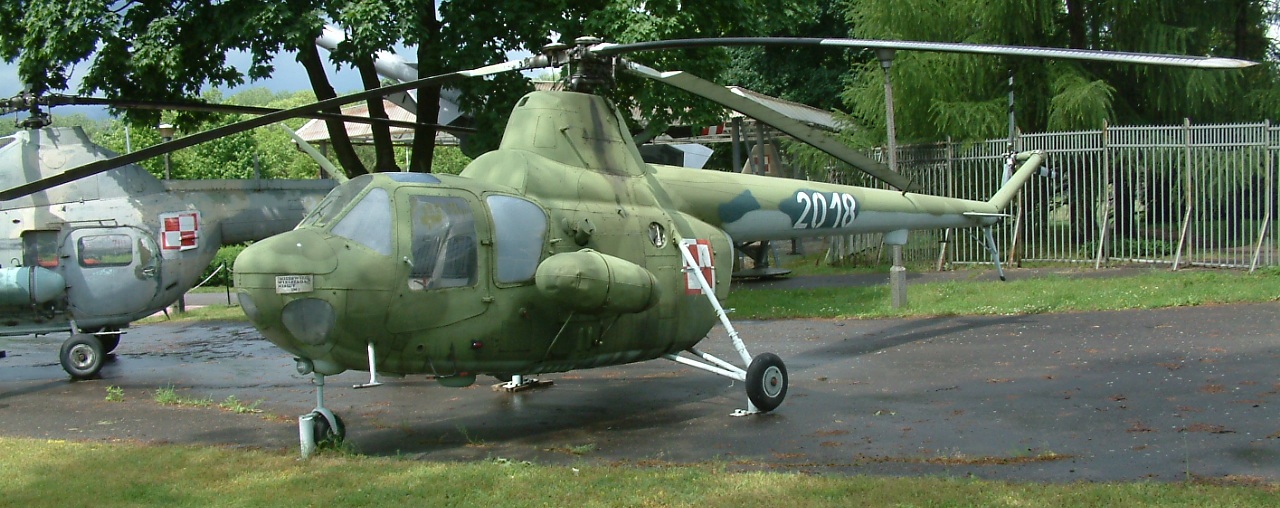 :Three-seat general-purpose transport helicopter, seating a pilot and two passengers, powered by a AI-26V radial piston engine.
;Mi-1KR (TKR)
:Light reconnaissance and liaison helicopter of 1956, basing on Mi-1T.
;Mi-1NKh
:Three-seat general-purpose utility helicopter, basing on Mi-1T. Designed to be used as an agricultural aircraft, air ambulance, passenger transport, air mail, freight transport helicopter (NKh—''narodnoye khozyastvo—''National Economy).
;Mi-1A
:Three-seat general-purpose transport helicopter of 1957, seating a pilot and two passengers, with increased reliability.
;Mi-1AKR
:Light reconnaissance and liaison helicopter, basing on Mi-1A.
;Mi-1U/TU/AU/MU
:Dual-control training helicopter variants (respectively, of basic Mi-1, T, A and M models).
;Mi-1M
:Four-seat light general-purpose helicopter of 1957, seating a pilot and three passengers. Visible changes are: raised roof above a cabin, blunter nose shape, and horizontal bottom windows' line instead of slanted.
;Mi-1M Moskvich
:Civil transport helicopter for
:Three-seat general-purpose transport helicopter, seating a pilot and two passengers, powered by a AI-26V radial piston engine.
;Mi-1KR (TKR)
:Light reconnaissance and liaison helicopter of 1956, basing on Mi-1T.
;Mi-1NKh
:Three-seat general-purpose utility helicopter, basing on Mi-1T. Designed to be used as an agricultural aircraft, air ambulance, passenger transport, air mail, freight transport helicopter (NKh—''narodnoye khozyastvo—''National Economy).
;Mi-1A
:Three-seat general-purpose transport helicopter of 1957, seating a pilot and two passengers, with increased reliability.
;Mi-1AKR
:Light reconnaissance and liaison helicopter, basing on Mi-1A.
;Mi-1U/TU/AU/MU
:Dual-control training helicopter variants (respectively, of basic Mi-1, T, A and M models).
;Mi-1M
:Four-seat light general-purpose helicopter of 1957, seating a pilot and three passengers. Visible changes are: raised roof above a cabin, blunter nose shape, and horizontal bottom windows' line instead of slanted.
;Mi-1M Moskvich
:Civil transport helicopter for 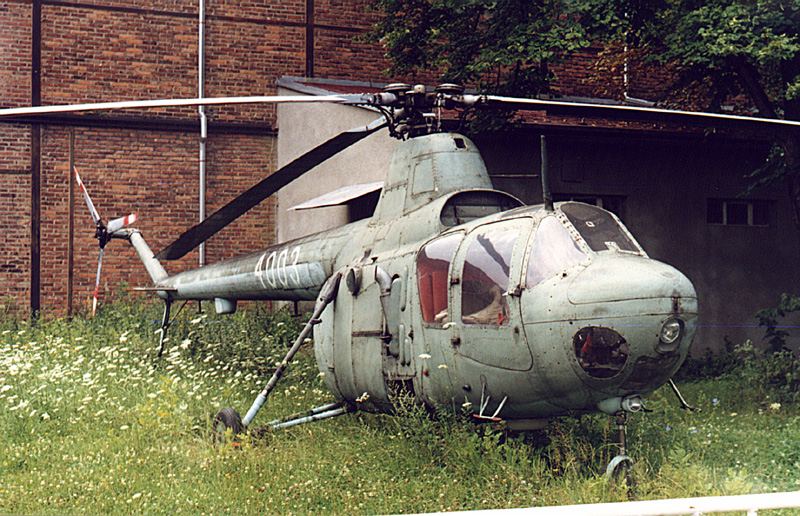 :Four-seat general-purpose utility helicopter, basing on Mi-1M. Designed to be used as an agricultural aircraft, air ambulance, passenger transport, air mail, freight transport helicopter (NKh—n''arodnoye khozyastvo—''National Economy).
;Mi-1MG
:Float-equipped version of the Mi-1M for whaling ships, of 1958 (2 made).
;Mi-1MRK
:Prototype of a liaison helicopter, basing on Mi-1M (''razvedyvatelno-korrektirovochnoi—''reconnaissance-artillery correcting), tested in 1960-1962.
;Mi-1MU
:Prototype of an armed variant, tested from 1961, with four 3M11 Falanga (''AT-2'') or six
:Four-seat general-purpose utility helicopter, basing on Mi-1M. Designed to be used as an agricultural aircraft, air ambulance, passenger transport, air mail, freight transport helicopter (NKh—n''arodnoye khozyastvo—''National Economy).
;Mi-1MG
:Float-equipped version of the Mi-1M for whaling ships, of 1958 (2 made).
;Mi-1MRK
:Prototype of a liaison helicopter, basing on Mi-1M (''razvedyvatelno-korrektirovochnoi—''reconnaissance-artillery correcting), tested in 1960-1962.
;Mi-1MU
:Prototype of an armed variant, tested from 1961, with four 3M11 Falanga (''AT-2'') or six  ;SM-1WSz
:Dual-control training helicopter.
;SM-1WZ
:Agricultural helicopter.
; SM-2
:Improved Polish version with a stretched fuselage, seating a pilot and four passengers.
;Mi-3
:Improved version with four bladed main rotor. Designation reused for a planned Mi-2
;SM-1WSz
:Dual-control training helicopter.
;SM-1WZ
:Agricultural helicopter.
; SM-2
:Improved Polish version with a stretched fuselage, seating a pilot and four passengers.
;Mi-3
:Improved version with four bladed main rotor. Designation reused for a planned Mi-2
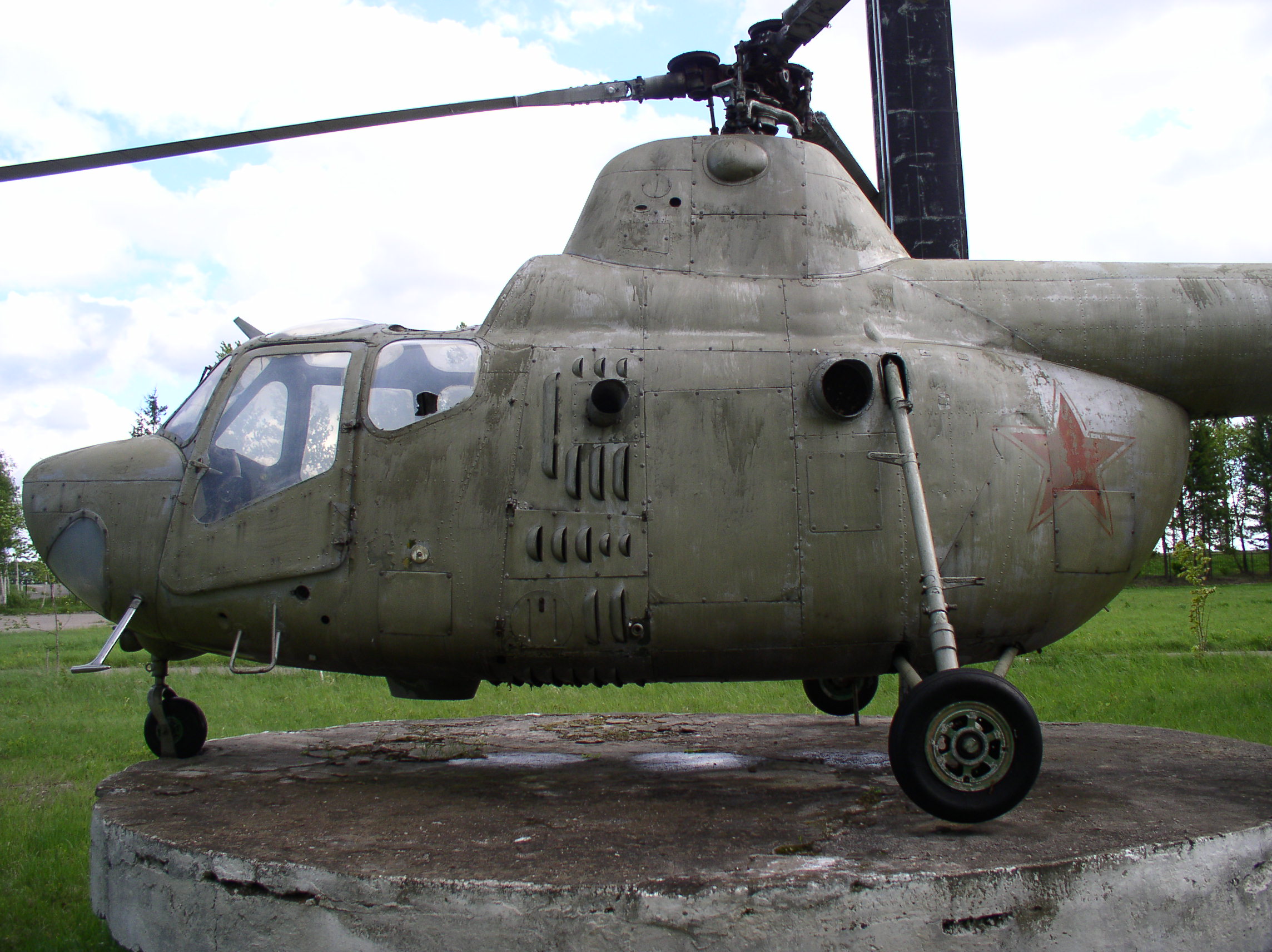 ;
*
;
* 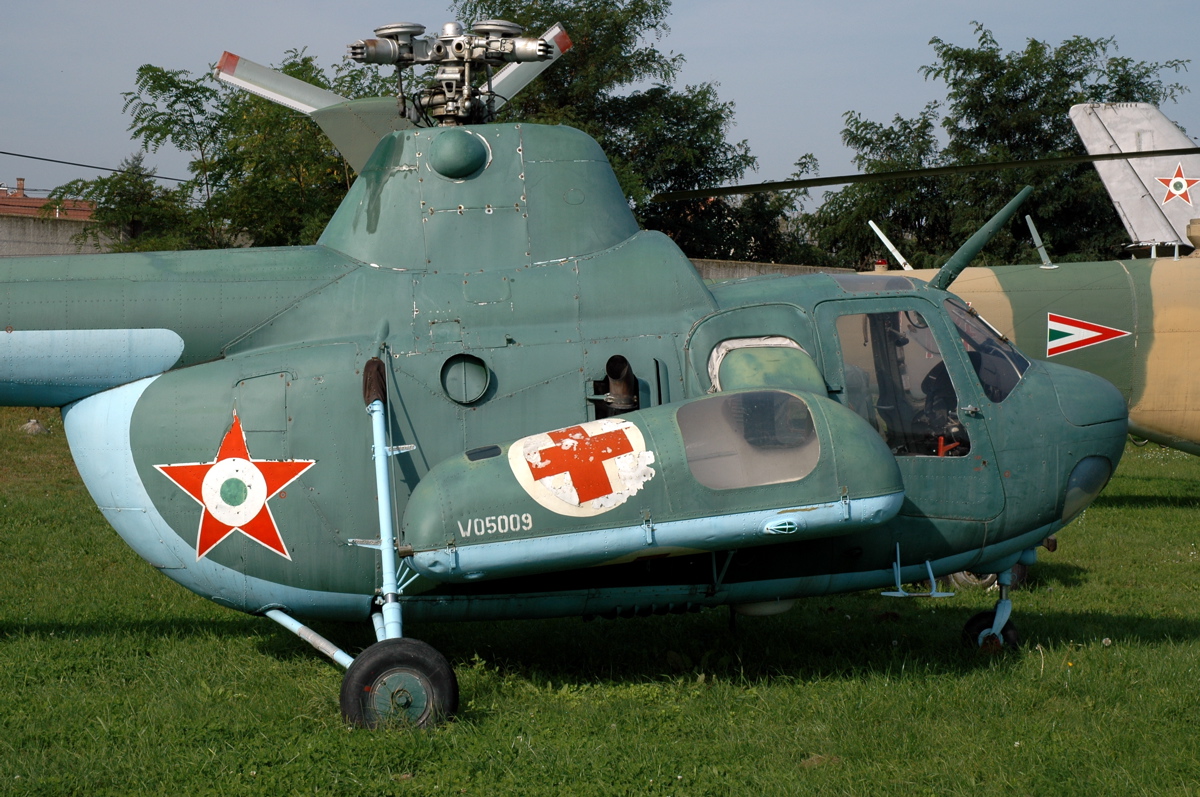 ;
*
;
*

Mil
Drawings of Mi-1 variants
{{Authority control Mi-01 Mil aircraft 1940s Soviet military utility aircraft 1940s Soviet helicopters Single-engined piston helicopters Aircraft first flown in 1948
USAF
The United States Air Force (USAF) is the air service branch of the United States Armed Forces, and is one of the eight uniformed services of the United States. Originally created on 1 August 1907, as a part of the United States Army Sign ...
/DoD reporting name "Type 32", NATO reporting name
NATO reporting names are code names for military equipment from Russia, China, and historically, the Eastern Bloc (Soviet Union and other nations of the Warsaw Pact). They provide unambiguous and easily understood English words in a uniform manne ...
"Hare") was a Soviet
The Soviet Union,. officially the Union of Soviet Socialist Republics. (USSR),. was a List of former transcontinental countries#Since 1700, transcontinental country that spanned much of Eurasia from 1922 to 1991. A flagship communist state, ...
three- or four-seat light utility helicopter
A helicopter is a type of rotorcraft in which lift and thrust are supplied by horizontally spinning rotors. This allows the helicopter to take off and land vertically, to hover, and to fly forward, backward and laterally. These attributes ...
. It was the first Soviet helicopter to enter serial production. It is powered by one Ivchenko AI-26
The Ivchenko AI-26 is a seven-cylinder air-cooled radial engine used in early Soviet helicopters and later used in light utility aircraft.
Design and development
The AI-26 engine was designed by A.G Ivchenko in 1945 with the early designation M ...
V radial piston engine. It entered service in 1950 and was first seen on the 1951
Events
January
* January 4 – Korean War: Third Battle of Seoul – Chinese and North Korean forces capture Seoul for the second time (having lost the Second Battle of Seoul in September 1950).
* January 9 – The Government of the United ...
Soviet Aviation Day, Tushino and was produced for 16 years. More than 1,000 were built in the USSR and 1,594 in Poland, as SM-1.
Development
Mikhail Mil
Mikhail Leontyevich Mil (russian: Михаи́л Лео́нтьевич Миль; 22 November 1909 – 31 January 1970) was a Russian aerospace engineer and scientist. He was the founder and general designer of the Mil Moscow Helicopter Pla ...
began work on rotary-winged aircraft before 1930, but the Mi-1, his first production helicopter, was begun in 1946, under a designation EG-1. In 1947 Mil became a head of OKB-4 design bureau in Tushino
Tushino ( rus, Тушино, p=ˈtuʂɨnə) is a former village and town to the north of Moscow, which has been part of the city's area since 1960. Between 1939 and 1960, Tushino was classed as a separate town. The Skhodnya River flows across the ...
, and works were intensified. A final design was named GM-1 (for ''Gyelikopter Mila'', Mil's Helicopter). Soviet engineers tried to create a completely original design. So, they made a rotor hub with spaced vertical and horizontal hinges. This design increased the efficiency of helicopter control and was much simpler than that used on American helicopters. The prototype completed first free flight on 20 September 1948 (pilot Mikhail Baikalov). In 1949 it underwent official state trials. Despite crashes of two prototypes, the design was an overall success, and after further work, was ordered for a production, under a new designation Mi-1, for Mil initials. The production was initially limited — the first series of only 15 machines was ordered on 21 February 1950, in factory No.3 in Moscow. Only after presentation to Joseph Stalin
Joseph Vissarionovich Stalin (born Ioseb Besarionis dze Jughashvili; – 5 March 1953) was a Georgian revolutionary and Soviet political leader who led the Soviet Union from 1924 until his death in 1953. He held power as General Secreta ...
in 1951, the authorities decided to increase production. In 1952–1953, 30 Mi-1 were manufactured in Kazan
Kazan ( ; rus, Казань, p=kɐˈzanʲ; tt-Cyrl, Казан, ''Qazan'', IPA: ɑzan is the capital and largest city of the Republic of Tatarstan in Russia. The city lies at the confluence of the Volga and the Kazanka rivers, covering a ...
, and from 1954 a mass production started in Orenburg
Orenburg (russian: Оренбу́рг, ), formerly known as Chkalov (1938–1957), is the administrative center of Orenburg Oblast, Russia. It lies on the Ural River, southeast of Moscow. Orenburg is also very close to the Kazakhstan-Russia bor ...
and from 1956 in Rostov
Rostov ( rus, Росто́в, p=rɐˈstof) is a town in Yaroslavl Oblast, Russia, one of the oldest in the country and a tourist center of the Golden Ring. It is located on the shores of Lake Nero, northeast of Moscow. Population:
While t ...
(current Rostvertol
JSC Rostvertol (russian: Роствертол) is a Russian helicopter manufacturer company located in Rostov-on-Don. It was founded on 1 July 1939. Rostvertol has been producing helicopters designed by the Mil design bureau since 1956 and is a ...
). The design was a subject of further improvements during production, mostly increasing reliability. Especially a rotor technology was changing. Period between repair increased to 300 hours in Mi-1T (hence a letter T for ''trekhsotchasovoi'', 300-hour), 600 in Mi-1A, then to 1,000 and 3,000 hours by the end of production.

 All early variants seated pilot in front and two passengers behind him, in common cabin.Grzegorzewski, 1975 an
All early variants seated pilot in front and two passengers behind him, in common cabin.Grzegorzewski, 1975 anMi-1 at Ugolok neba
/ref> The first production variant was Mi-1, quickly replaced by improved Mi-1T, that carried extra operational equipment including full radio and blind-flying instruments, and had more reliable engine AI-26V.Grzegorzewski, 1975 an
/ref> The next basic variant was the Mi-1A of 1957, with further increased reliability and provisions for one 160 L external fuel tank.Grzegorzewski, 1975 an
/ref> A new major variant, Mi-1M in 1957 introduced an enlarged cabin and the more powerful AI-26VF engine, which allowed the accommodation of three passengers on a bench behind the pilot. Cabin height increased from 1.22 to 1.26 m and width from 1.01 to 1.2 m. A noticeable difference was horizontal bottom windows line instead of slanted, with bigger rear side windows, and a less pointed fuselage nose. It could also be fitted with two external side capsules for the injured or mail.Grzegorzewski, 1975 an
/ref> There were trials of an armed anti-tank variant Mi-1MU carried in 1961, being the first Soviet attack helicopter, but it did not enter production due to having a small payload and the cessation of production of the basic variant.Jakubovich, Nikolay. ''Boevye vertolety Rossii. Ot "Omegi" do "Alligatora"''. Moscow, Yuza & Eksmo, 2010, , pp.30-33. Well over 1,000 of all variants were built in the USSR, including a proportion of dual-control trainers (with U suffix): Mi-1U, TU, AU, MU, with the instructor seated behind a trainee. 15 were produced in Moscow in 1950, 30 in Kazan in 1952–1953, 597 in Orenburg in 1954–1958 and 370 in Rostov in 1956–1960. In 1956, license-production of the four-seat model began in Poland, at WSK PZL-Świdnik, where 1,594 were built until 1965, under the designation SM-1. Several new versions were developed at
Świdnik
Świdnik () is a town in southeastern Poland with 40,186 inhabitants (2012), situated in the Lublin Voivodeship, southeast of the city of Lublin. It is the capital of Świdnik County. Świdnik belongs to the historic province of Lesser Poland, ...
, including the SM-2 five-seater, with a new fuselage.
Several international records in its class were broken with the Mi-1 or SM-2.Grzegorzewski, 1975.
Variants
;GM-1 :The original designation of the Mil Mi-1 prototypes, powered by a AI-26GR radial engine (later AI-26GRF). ;Mi-1 :Three-seat light general-purpose helicopter, seating a pilot and two passengers, powered by a AI-26GRF radial piston engine. Initial production model. ;Mi-1T :Three-seat general-purpose transport helicopter, seating a pilot and two passengers, powered by a AI-26V radial piston engine.
;Mi-1KR (TKR)
:Light reconnaissance and liaison helicopter of 1956, basing on Mi-1T.
;Mi-1NKh
:Three-seat general-purpose utility helicopter, basing on Mi-1T. Designed to be used as an agricultural aircraft, air ambulance, passenger transport, air mail, freight transport helicopter (NKh—''narodnoye khozyastvo—''National Economy).
;Mi-1A
:Three-seat general-purpose transport helicopter of 1957, seating a pilot and two passengers, with increased reliability.
;Mi-1AKR
:Light reconnaissance and liaison helicopter, basing on Mi-1A.
;Mi-1U/TU/AU/MU
:Dual-control training helicopter variants (respectively, of basic Mi-1, T, A and M models).
;Mi-1M
:Four-seat light general-purpose helicopter of 1957, seating a pilot and three passengers. Visible changes are: raised roof above a cabin, blunter nose shape, and horizontal bottom windows' line instead of slanted.
;Mi-1M Moskvich
:Civil transport helicopter for
:Three-seat general-purpose transport helicopter, seating a pilot and two passengers, powered by a AI-26V radial piston engine.
;Mi-1KR (TKR)
:Light reconnaissance and liaison helicopter of 1956, basing on Mi-1T.
;Mi-1NKh
:Three-seat general-purpose utility helicopter, basing on Mi-1T. Designed to be used as an agricultural aircraft, air ambulance, passenger transport, air mail, freight transport helicopter (NKh—''narodnoye khozyastvo—''National Economy).
;Mi-1A
:Three-seat general-purpose transport helicopter of 1957, seating a pilot and two passengers, with increased reliability.
;Mi-1AKR
:Light reconnaissance and liaison helicopter, basing on Mi-1A.
;Mi-1U/TU/AU/MU
:Dual-control training helicopter variants (respectively, of basic Mi-1, T, A and M models).
;Mi-1M
:Four-seat light general-purpose helicopter of 1957, seating a pilot and three passengers. Visible changes are: raised roof above a cabin, blunter nose shape, and horizontal bottom windows' line instead of slanted.
;Mi-1M Moskvich
:Civil transport helicopter for Aeroflot
PJSC AeroflotRussian Airlines (russian: ПАО "Аэрофло́т — Росси́йские авиали́нии", ), commonly known as Aeroflot ( or ; russian: Аэрофлот, , ), is the flag carrier and the largest airline of Russia. The ...
, with better cabin soundproofing, equipped with hydraulic controls and an all-metal rotor.
;Mi-1MNKh
 :Four-seat general-purpose utility helicopter, basing on Mi-1M. Designed to be used as an agricultural aircraft, air ambulance, passenger transport, air mail, freight transport helicopter (NKh—n''arodnoye khozyastvo—''National Economy).
;Mi-1MG
:Float-equipped version of the Mi-1M for whaling ships, of 1958 (2 made).
;Mi-1MRK
:Prototype of a liaison helicopter, basing on Mi-1M (''razvedyvatelno-korrektirovochnoi—''reconnaissance-artillery correcting), tested in 1960-1962.
;Mi-1MU
:Prototype of an armed variant, tested from 1961, with four 3M11 Falanga (''AT-2'') or six
:Four-seat general-purpose utility helicopter, basing on Mi-1M. Designed to be used as an agricultural aircraft, air ambulance, passenger transport, air mail, freight transport helicopter (NKh—n''arodnoye khozyastvo—''National Economy).
;Mi-1MG
:Float-equipped version of the Mi-1M for whaling ships, of 1958 (2 made).
;Mi-1MRK
:Prototype of a liaison helicopter, basing on Mi-1M (''razvedyvatelno-korrektirovochnoi—''reconnaissance-artillery correcting), tested in 1960-1962.
;Mi-1MU
:Prototype of an armed variant, tested from 1961, with four 3M11 Falanga (''AT-2'') or six 9M14 Malyutka
The 9M14 Malyutka (russian: Малютка, links=no; "Little one", NATO reporting name: AT-3 Sagger) is a manual command to line of sight (MCLOS) wire-guided anti-tank guided missile (ATGM) system developed in the Soviet Union. It was the first ...
(''AT-3'') anti-tank missiles.
;SM-1 (SM-1/300)
:Polish production version, powered by a LiT-3 radial piston engine. The Mil Mi-1 helicopter built by WSK PZL-Świdnik under licence in Poland.
;SM-1/600
:Polish production version with increased reliability of 600 hours, of 1957 (factory designation).
;SM-1Sz
:Dual-control training helicopter.
;SM-1W
:Polish production version of the Mi-1M, of 1960.
;SM-1Wb
:Polish production version of the Mi-1M, of 1963, with increased reliability of 800 hours (factory designation).
;SM-1WS
:Air ambulance helicopter.
derivative
In mathematics, the derivative of a function of a real variable measures the sensitivity to change of the function value (output value) with respect to a change in its argument (input value). Derivatives are a fundamental tool of calculus. F ...
.
Operators
; *Afghan Air Force
The Air Force of the Islamic Emirate of Afghanistan, also referred to as the Islamic Emirate Air Force and the Afghan Air Force, is the air force branch of the Armed Forces of the Islamic Emirate of Afghanistan.
The Royal Afghan Air Force was e ...
;
* Albanian Air Force
The Albanian Air Force ( sq, Forca Ajrore e Republikës së Shqipërisë - Air Force of the Republic of Albania) is the air force of Albania and one of the branches of the Albanian Armed Forces.
History
Early history
In 1914 the governmen ...
;
* Algerian Air Force
The Algerian Air Force (AAF) ( ar, القُوَّاتُ الجَوِّيَّةُ الجَزَائِرِيَّةُ, links=, lit=, translit=al-Quwwāt al-Ǧawwiyyah al-Ǧazāʾiriyyah, french: Forces aériennes algériennes, links=, lit=, translit ...
; Bulgaria
Bulgaria (; bg, България, Bǎlgariya), officially the Republic of Bulgaria,, ) is a country in Southeast Europe. It is situated on the eastern flank of the Balkans, and is bordered by Romania to the north, Serbia and North Macedon ...
* Bulgarian Air Force
The Bulgarian Air Force ( bg, Военновъздушни сили, Voennovazdushni sili) is one of the three branches of the Military of Bulgaria, the other two being the Bulgarian Navy and Bulgarian land forces. Its mission is to guard and p ...
 ;
*
;
* People's Liberation Army Air Force
The People's Liberation Army Air Force (PLAAF; ), also known as the Chinese Air Force (中国空军) or the People's Air Force (人民空军), is an aerial service branch of the People's Liberation Army, the regular armed forces of the Peo ...
;
* Cuban Air Force
The Cuban Revolutionary Air and Air Defense Force ( es, Defensa Anti-Aérea y Fuerza Aérea Revolucionaria) commonly abbreviated to DAAFAR in both Spanish and English, is the air force of Cuba.
History
Background
The Cuban Army Air Force was ...
;
* Czechoslovakian Air Force
;
* East German Air Force
The Air Forces of the National People's Army (german: Luftstreitkräfte der Nationalen Volksarmee; LSK) was the Air Force of East Germany. As with the , the , and the Border Troops, it was a military branch of the National People's Army (NVA).
...
;
* Egyptian Air Force
The Egyptian Air Force (EAF) ( ar, القوات الجوية المصرية, El Qūwāt El Gawīyä El Maṣrīya), is the aviation branch of the Egyptian Armed Forces that is responsible for all airborne defence missions and operates all milit ...
;
* Finnish Air Force
The Finnish Air Force (FAF or FiAF; fi, Ilmavoimat, , Air forces; sv, Flygvapnet, , Air weapon) is one of the branches of the Finnish Defence Forces. Its peacetime tasks are airspace surveillance, identification flights, and production of Finnis ...
; Hungary
Hungary ( hu, Magyarország ) is a landlocked country in Central Europe. Spanning of the Carpathian Basin, it is bordered by Slovakia to the north, Ukraine to the northeast, Romania to the east and southeast, Serbia to the south, Croatia a ...
* Hungarian Air Force
The Hungarian Air Force ( hu, Magyar Légierő), is the air force branch of the Military of Hungary, Hungarian Defence Forces.
The task of the current Hungarian Air Force is primarily defensive purposes. The flying units of the air force are or ...
;
* Indonesian Air Force
The Indonesian Air Force ( id, Tentara Nasional Indonesia Angkatan Udara (TNI-AU), literally "''Indonesian National Military-Air Force''") sometimes shortened as IDAF / IdAF, is the aerial branch of the Indonesian National Armed Forces. The ...
;
* Iraqi Air Force
The Iraqi Air Force (IQAF or IrAF) ( ar, القوات الجوية العراقية, Al Quwwat al Jawwiyah al Iraqiyyah}) is the aerial warfare service branch of the Iraqi Armed Forces. It is responsible for the defense of Iraqi airspace as well ...
;
* Mongolian Air Force
The Mongolian Air Force ( mn, Монгол Улсын Зэвсэгт Хүчний Агаарын цэрэг) is the aerial warfare service branch of the Mongolian Armed Forces.
History
Early years and WWII
On 25 May 1925, a Junkers F.13 pilote ...
 ;
*
;
* North Korean Air Force
The Korean People's Army Air and Anti-Air Force (KPAAF; ; Hanja: 朝鮮人民軍 航空 및 反航空軍 ) is the unified military aviation force of North Korea. It is the second largest branch of the Korean People's Army comprising an estimated ...
; Poland
Poland, officially the Republic of Poland, is a country in Central Europe. It is divided into 16 administrative provinces called voivodeships, covering an area of . Poland has a population of over 38 million and is the fifth-most populous ...
* Polish Air Force
; Socialist Republic of Romania
The Socialist Republic of Romania ( ro, Republica Socialistă România, RSR) was a Marxist–Leninist one-party socialist state that existed officially in Romania from 1947 to 1989. From 1947 to 1965, the state was known as the Romanian People ...
* Romanian Air Force
The Romanian Air Force (RoAF) ( ro, Forțele Aeriene Române) is the air force branch of the Romanian Armed Forces. It has an air force headquarters, an operational command, five airbases and an air defense brigade. Reserve forces include one ai ...
;
* Aeroflot
PJSC AeroflotRussian Airlines (russian: ПАО "Аэрофло́т — Росси́йские авиали́нии", ), commonly known as Aeroflot ( or ; russian: Аэрофлот, , ), is the flag carrier and the largest airline of Russia. The ...
* Soviet Air Force
The Soviet Air Forces ( rus, Военно-воздушные силы, r=Voyenno-vozdushnyye sily, VVS; literally "Military Air Forces") were one of the air forces of the Soviet Union. The other was the Soviet Air Defence Forces. The Air Forces ...
;
* Syrian Air Force
)
, mascot =
, anniversaries = 16 October
, equipment =
, equipment_label =
, battles = * 1948 Arab-Israeli War
* Six-Day War
* Yom Kippur War
...
;
* UAR Air Force
;
*North Vietnamese Air Force
The Vietnam People's Air Force (VPAF, ), formally refers itself as the Air Defence - Air Force (ADAF, ) or the Vietnamese Air Force (VNAF, ), is the aerial warfare service branch of Vietnam. It is the successor of the former North Vietnamese ...
;
*Yemeni Air Force
The Yemeni Air Force ( ar, القوات الجوية اليمنية, al-Quwwat al-Jawwiya al-Yamaniya) is the air operations branch of the Yemeni Armed Forces. Numbers of aircraft can not be confirmed but serviceability of these aircraft is low. ...
Specifications (Mil Mi-1)

See also
References
*Grzegorzewski, Jerzy: ''Śmigłowiec Mi-1'', Typy Broni i Uzbrojenia nr.38, MON, Warsaw, 1975Mil
External links
Drawings of Mi-1 variants
{{Authority control Mi-01 Mil aircraft 1940s Soviet military utility aircraft 1940s Soviet helicopters Single-engined piston helicopters Aircraft first flown in 1948